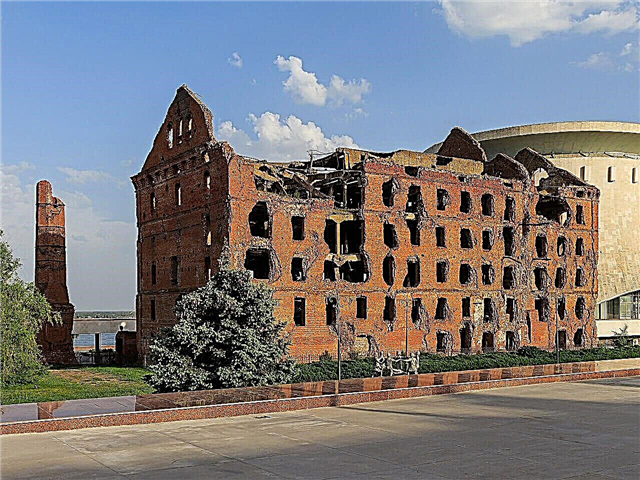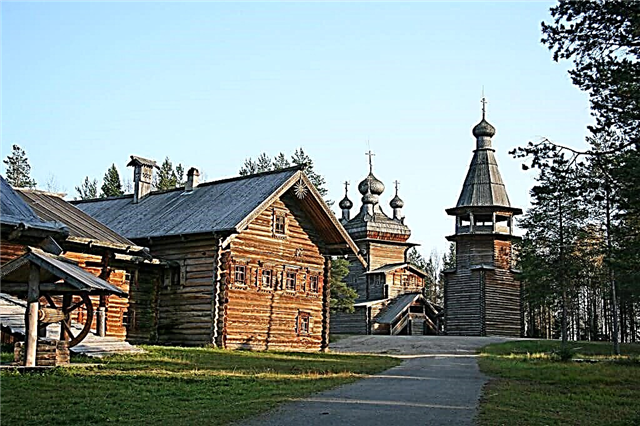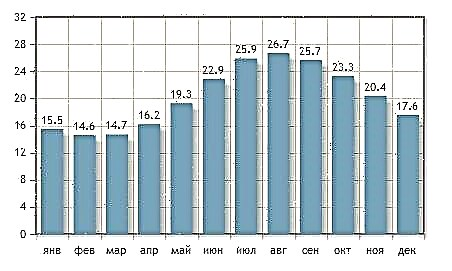Argentina's cities often grow at the expense of migrants from neighboring countries. In addition to the capital Buenos Aires, two more cities, Cordoba and Rosario, can boast of surpassing the million-population mark. Three settlements from the list of the largest in the country do not even reach 100 thousand inhabitants.
Resort areas are being created throughout Argentina to attract not only local tourists, but also guests from other regions. For this, the coasts, mountain slopes, as well as unique natural conditions are used. Beach lovers should head to Mar del Plata, and ski fans should head to the Neuquena area. Colonial architecture predominates in the cities: for example, the historic part of Cordoba was even included in the UNESCO World Heritage List.
The largest cities in Argentina
List of the largest cities in terms of population in the country.
Buenos Aires
The capital of Argentina occupies the western shore of the La Plata Bay. In Buenos Aires, you can see the widest street on the planet - July 9th Avenue. The symbol of the city is installed on the Republican Square - an obelisk with a height of 67 meters. More than 600 parks have turned the area into a vast green area. Remarkable architecture of government buildings. And the acoustics of the opera house are not inferior to the world's leading venues. A tango festival is held in August.
Population - 3 063 728 people (2017).

Cordova
Founded in 1573 and named after the Spanish city of the same name. The buildings of the central part of Cordoba, preserved from colonial times, are included in the UNESCO World Heritage List. The National University is the first institution of higher education in the country. The largest public park is Sarmiento. There are museums and a zoo on its territory.
Population - 1 329 604 people (2010).

Rosario
It stands on the banks of the Parana River. The city is rich in recreation areas: Independence Park, French Garden, Calendar Garden, Rose Garden. There are dozens of museums in Rosario: Argentine theater, tango, fine arts, local history, police. The National Flag Memorial is one of the main monuments of the city. In honor of the 80th anniversary of Che Guevara, who was born here, a statue of him was installed.
Population - 1 193 605 people (2010).

Mar del Plata
Large resort and fishing port on the Atlantic coast. The uninterrupted beach strip is over 8 kilometers long. Shows with dolphins and seals are organized on the water. Excursions to local farms are a popular part of the tourist program. They include tasting of wine and agricultural products. Mar del Plata has a vibrant nightlife.
Population - 860 337 people (2017).
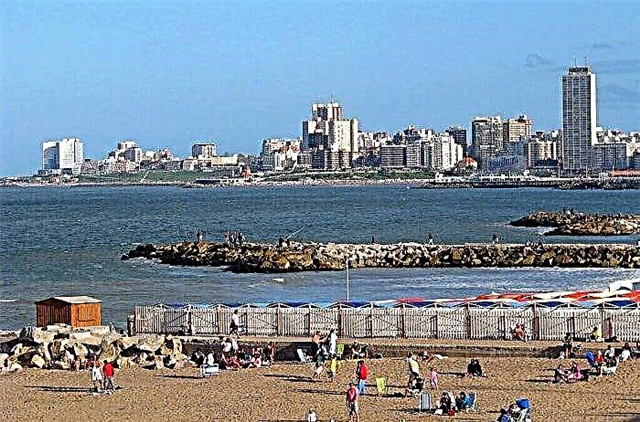
San Miguel de Tucuman
The provincial capital of Tucuman is the largest city in the north of Argentina. Notable religious sites are the colonial-style cathedral, the neo-Gothic church of the Virgin Mary of Lourdes, and the Basilica of the Holy Communion. The House of Independence and the House of Government are architectural and historical monuments. The 9th July park covers 400 hectares and is filled with replicas of Belle Époque sculptures.
Population - 694 327 people (2010).

La Plata
Founded in the 80s of the XIX century, to move here the capital of the province to replace the new status of Buenos Aires. It is called the "city of lindens" because of the large number of these trees on the streets and in parks. The Cathedral of La Plata is the largest temple in Argentina. In the surrounding area, there are not only sightseeing tours, but also bike tours.
Population - 643,133 people (2010).

Salta
It is located at the foot of the Andes in the Lerma Valley. Many architectural monuments from the times of the colonialists have survived. The façade of the cathedral is especially beautiful. The museums of the city offer to get acquainted with the collections of artifacts of the pre-Columbian period. A large festival is held throughout April with craft exhibitions, food fairs and concerts.
Population - 535 303 people (2010).

San Juan
Originally it stood on the banks of the river of the same name. However, after the flooding, the city was moved several kilometers. The 1944 earthquake destroyed many buildings, including St. John's Cathedral. The new temple was rebuilt only in 1979. An archaeological museum is open on the outskirts, telling about the peoples who inhabited this area. Wine tasting is a popular activity among tourists.
Population - 471 389 people (2010).

Lanus
The city practically merged with the capital and became part of Greater Buenos Aires. Stretches along the sea coast. Several large industrial enterprises operate here. There are many farms and farmland in the vicinity. The increase in population is mainly due to migrants from neighboring countries. The most famous native is the footballer Diego Maradona.
Population - 459,263 people (2010).

Santa fe
Located on the shores of Lake Setubal. In 1969, a tunnel was opened under the Parana River, connecting the city of the same name and Santa Fe. Urban areas are being actively rebuilt. Thus, in 2008, casinos and hotels "grew" on the site of former grain elevators, where life is in full swing around the clock. Tourists have access to excursions to the space observation center and the Esmeralda zoo station.
Population - 405 683 people (2017).

Corrientes
River port in the north-east of the country. The architecture is mixed: the modern style is gradually replacing the colonial one. Must-sees are the Mburukuya National Park, the General Manuel Belgrano Bridge, which is illuminated in different colors, and the Iberian Lands, which are especially attractive for amateur bird watchers. The city hosts several major annual carnivals.
Population - 352 646 people (2010).

San Salvador de Jujuy
Located near the slopes of the Andes. The main architectural objects: Government House, built in the colonial style, the cathedral, dating from the 17th century, the Basilica of St. Francis from the same period, the chapel of St. Barbara. The borders of the Kalilegua National Park begin close to the city. San Salvador is popular as a holiday destination for Argentines.
Population - 321 789 people (2018).

Bahia Blanca
The translation of the name is “white bay”. One of the largest ports in Argentina. People come here for fishing: it is allowed to catch sharks and use boats. Main museums: contemporary art, port, historical. The city has two zoos: municipal and private. In the southeast of Bahia Blanca, there are two large resorts with sandy beaches, lively nightlife and first-class hotels.
Population - 301,572 people (2010).

Resistance
Located on the coast of the Rio Negro. In summer, the area is very hot and thunderstorms are frequent. The streets of the city are filled with monuments and historical sights, which is why Resistencia was named “the city of monuments”. For more than 30 years, the city has hosted an international sculpture competition curated by UNESCO. Interesting museums - the history of nature of Augusto Schulz and the fine arts of Rene Brusau.
Population - 291 720 people (2010).

La Rioja
Occupies the eastern part of the province of the same name. Livestock and grape growing are the backbone of the region's economy. The Talampaya National Park is located nearby. There is also an elevation of 1680 meters in the rows. It is used for paragliding. From December 31 to January 3, Tinkunaco events are held.
Population - 289 983 people (2001).

Posadas
Urban areas filled the southern bank of the Parana River. In the past, the port played an important role in the development of the city, now it is outdated and is used for the transport of passengers and sports competitions. Architectural monuments - the Romanesque cathedral and the government palace dating from the 19th century. The local museum houses collections related to the Jesuits and Guarani Indians.
Population - 275 988 people (2010).

Santiago del Estero
Founded in 1553. The main attractions: the city cathedral, Liberty Square, the Santo Domingo monastery, the Government House and the Archaeological Museum, the cultural center. The Termas de Rio Hondo thermal spring and 4 protected nature reserves are nearby. Tourist excursions to the Copo National Park start from the city. The province is famous for its folklore.
Population - 252 192 people (2010).

Parana
Located on the east coast of the river of the same name. The local port is used for the transport of agricultural goods. Colonial churches, European-style Government House, modern high-rises - the streets of Parana are full of different architectural beauties. The city hosts a mate festival. Guests of the holiday are taught how to prepare this drink and are allowed to taste rare varieties.
Population - 247 863 people (2010).
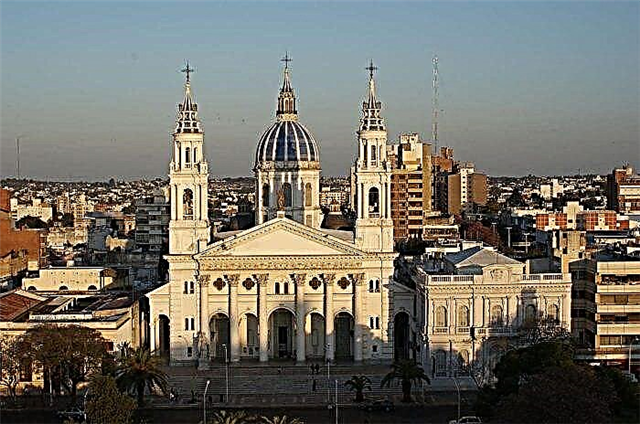
Merlot
It is part of the Greater Buenos Aires metropolitan area. The city expanded greatly in the second half of the 20th century: the surrounding farms gave way to residential areas. The oldest surviving building is the railway station. The Church of Our Lady of Mercy was designed by Argentine urbanist and architect Pedro Benoit. He is also the author of the project of a local school named after Domingo Faustino Sarmiento.
Population - 244,168 people (2001).

Neuquen
Belongs to the territory between the Neuquen and Limay rivers. Among the city's museums are the branch of the National Museum of Art, the Emilio Saraco Art Gallery and the Gregorio Alvarez Municipal Museum. Other interesting places: "square of flags", summer theater, observatory, skating rink, central park with fountains. There are several resorts nearby, including a ski resort.
Population - 231,198 people (2010).

Quilmes
Part of the Greater Buenos Aires metropolitan area. Glass and textile factories are the backbone of the economy of the entire region. The coastal low-lying location makes the city prone to flooding. The streets get poorer as you move east of La Plata. The eastern and western regions are separated by railways. Quilmes is famous for its brewery.
Population - 230 810 people (2001).

Banfield
It is part of the Greater Buenos Aires metropolitan area. The center of the capital is only 14 kilometers away. The main city attractions are the Julian Aguirre Conservatory, where about 2 thousand students study annually, and the house-museum of the artist Pio Collivadino. The football club of the same name is based in Banfield, which once became the champion of Argentina.
Population - 223 898 people (2010).

Formosa
A city in the north of Argentina. In winter, it is especially popular as a holiday destination for Argentines. Interesting activities in Formos: pirogue down the Bermejo River, sport fishing at a resort organized on the Paraguay River, horseback riding and a visit to a nature reserve. In the summer, a festival is held in honor of Our Lady - the patroness of the city. Carnival is held in February.
Population - 198 074 people (2001).

Godoy Cruz
Located on the slopes of the main Cordillera of the Andes. West of Godoy Cruz is the highest mountain on the mainland - Aconcagua Peak. The modern ski resort Las Lenhas has been built in the vicinity. Excursions to the Chilean border start from here. Hiking tours and visits to wineries in the area are organized. A club from the country's top division is based in the city.
Population - 189,578 people (2010).

San Luis
The capital of the province of the same name had to be founded several times: the raids of the aborigines did not allow the colonists to gain a foothold. The city's textile and ceramics industries are booming. The Potrero de los Funes reservoir has been built nearby. This is a resting place for both locals and visitors. Hiking and exploring the surrounding area are the main pursuits in San Luis.
Population - 169 947 people (2010).

San Fernando del Valle de Catamarca
Stretches at the foot of the Sierra de Ambato. Tourists are attracted by the colonial architecture and the opportunities for outdoor activities. Horseback riding, wine tastings, mountain biking and hiking are organized, among others. The main religious site of the area is the Cathedral Basilica of Senhora del Valle. The best souvenir from Catamarca is canned fruit or ponchos.
Population - 159,139 people (2010).

Santa rosa
City in the east of the province of La Pampa. Sightseeing: Casino, Spanish Theater, Art Gallery, Natural Science Museum, French Alliance. Laguna Don Thomas Park covers 500 hectares. There is a large lake on its territory. Fishing is allowed there, water sports can be practiced, sports grounds and play areas for children are organized.
Population - 103 860 people (2010).

Puerto Iguazu
Border town in northeastern Argentina. The famous waterfalls on the Iguazu River are 18 kilometers away. They are under the protection of UNESCO. The resort complex La Aripuca and the bird rehabilitation center are located nearby. There is the Luis Honorio Rolona Natural Park nearby. To get to the Brazilian city of Foz do Iguacu, you just need to cross the Commonwealth Bridge.
Population - 82,227 people (2010).

Pilar
Part of the Greater Buenos Aires metropolitan area. It is home to country clubs, golf courses, gated communities. October 12 Square is recognized as a National Historic Landmark. The Historical Museum of the city pays special attention to the signing of an agreement on the federalization of the country. The Pilar Nature Reserve was founded in 2003 on the banks of the river and occupies 297 hectares.
Population - 81 120 people (2010).

Ushuaia
The southernmost city on the planet. Refers to the territory of the island of Tierra del Fuego. Tourists come here almost all year for fishing, hiking or as part of cruise groups. A museum has been set up in the former prison building. The nearby national park and lighthouse can be reached by a 7-kilometer railroad. It is called the "Train at the End of the World."
Population - 73 541 people (2018).


